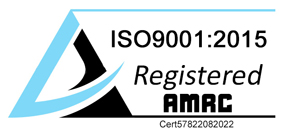Anodised Aluminium
Anodised Aluminium in the lead
Architects today are faced with a very particular set of challenges when they embark upon a new project. There are restraints they never truly faced before. Aside from the obvious constraints of striving to design visually striking, innovative structures that are both beautiful and functional – but use sustainably sourced materials to achieve their goal.
Sustainably sourced materials should be produced responsibly and ecologically and they must be recyclable at the end of their lifespan, which is expected to be longer and longer as processes and technology develops. These modern materials must be durable to meet these longevity requirements whilst not impeding design creativity for the architect. An equilibrium between all of these requirements must be met in order for the designer to achieve their vision within the parameters that the modern world dictates.
Anodised durability: a century in the making
The process behind aluminium anodisation is relatively old technology; we have had the raw materials and ability to anodise for almost 100 years. Whilst the quality of the end product has obviously improved over the years – fundamentally, the materials and process involved haven’t changed. The scientific research that has been applied to the anodisation process since its inception has resulted in a very reliable material, the out-door behaviour of which can be relied upon as consequence of years of refinement.
Indeed, independent inspection by anodisation companies and affiliate has confirmed that the protection of the anodic layer is just as effective 30 years after installation. A fact that can not be said for other surface finishes like paint or powder coating for example. Once the Aluminium has undergone the process and the surface is technically classed as aluminium oxide, the compound surface is extremely hard. On the Moh’s scale of mineral hardness, only diamond is harder – making anodised aluminium superbly resistant to scratches and abrasions.
Anodised aluminium: all the pro’s, none of the con’s
Other processes that involve adhering a layer of protection to the surface of the metal risk adhesion failure, water ingress and subsequent corrosion. As anodisation is an electrolytic process that permanently alters the surface of the metal into an oxide layer which is integrated into the metal substrate, the merest possibility of adhesion failure is eliminated. Splitting, peeling, cracking or blistering are all simply not possible even on typical weak spots such as corners or cut edges.
Anodisation also provides insurance against fading as once again, there are no materials within the process that can fade. Whether from the sun, wind, rain or simply the hands of time – organic coatings like paint face the inevitability of fading over time. Anodised aluminium is also impervious to ‘chalking’, an unsightly formation of fine powder that develops on the surface of painted exteriors as result of weathering. Over time, chalking will spoil the gloss level and lustre of a metallic coated finish. Anodised aluminium has no coating to chalk and can resist the most difficult of environmental conditions, from extreme heat and humidity to salty sea air.
Experienced Designers & Manufacturers
We create aluminium profiles and extrusions, designed and manufactured especially to suit your requirements. Contact our team today to arrange a quote and see how our service can help your business.
Flexible Volumes of Product
For one of pieces or larger bulk order, simply get in touch with our team today to get the ball rolling and start our bespoke design process.


